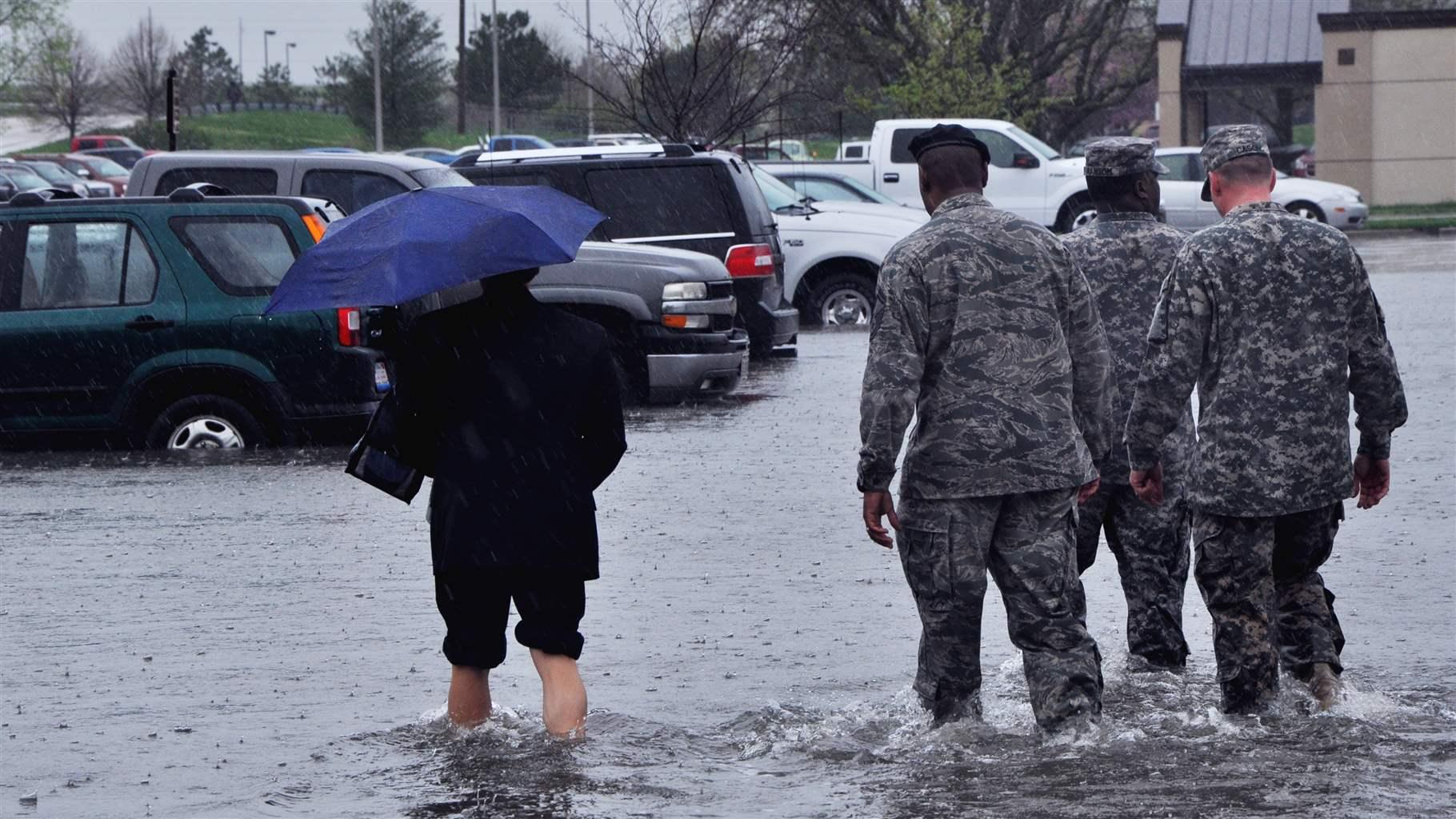President Signs Legislation Directing Military to Include Flood Preparation Standards for Military Bases
New requirements will save taxpayer dollars, protect critical facilities

Note: This piece was updated May 8, 2019, to reflect the minimum flood mitigation requirements for Defense Department construction projects.
Our armed services are trained to defend the country against outside forces, but many of our military bases are grappling with a growing threat at home: flooding. To help prevent bases from being deluged by floods, the John S. McCain National Defense Authorization Act, signed by President Donald Trump today, includes new planning and infrastructure requirements for the Department of Defense (DOD).
The measure directs the DOD to assess which facilities are located in flood-prone areas and requires those facilities to create plans to mitigate their risk. It also allows for a portion of military funds dedicated for constructing and maintaining base access roads to be used to make highways more resilient to floods.
These safeguards will improve military readiness and help ensure the safety of service members. While the requirements apply only to military projects, they mark a significant step in better protecting taxpayer investments from floodwaters.
Specifically, the new policy:
- Directs DOD to disclose to Congress any military construction projects partially or fully within the 100-year floodplain (an area with a 1 percent annual chance of flooding). It requires project proposals within floodplains to include an assessment of how vulnerable they are to flooding and state how this risk will be mitigated. Mitigation plans for non-mission-critical buildings must assume floodwaters could rise at least two feet above the 100-year floodplain, and three feet in the case of mission-critical facilities.
- Requires future environmental conditions to be considered in the design and modification of military facilities, and that master plans for major military installations anticipate, prepare for, and adapt to these conditions.
- Allows the secretary of transportation to use Defense Access Roads Program funds to replace highways and highway connections affected by rising seas and flooding.
Last year’s hurricane season cost taxpayers an estimated $1.2 billion to repair or rebuild military facilities, underscoring the need for DOD to better plan and account for the risks posed by flooding and extreme weather. The threat affects bases nationwide: A January 2018 vulnerability assessment by the DOD found that more than 930 military sites across 48 states have been hit by floods in the past 30 years. Given that DOD’s budget represents 16 percent of federal spending—the second largest of any federal program—it’s critical that bases and other installations are able to withstand increasingly extreme weather.
While this new policy is significant, The Pew Charitable Trusts supports additional flood risk management provisions beyond the DOD. For example, in 2016 the federal government estimated that at least 18,000 federally owned buildings and facilities, with a combined replacement cost of $83 billion, are located within the 100-year floodplain. It remains critical that lawmakers address the flood risks faced by all federally funded projects. Doing so will save taxpayer dollars and better protect our critical assets, communities, and infrastructure.
Forbes Tompkins is an officer and Evan Chapman is a senior associate with The Pew Charitable Trusts’ flood-prepared communities initiative.







